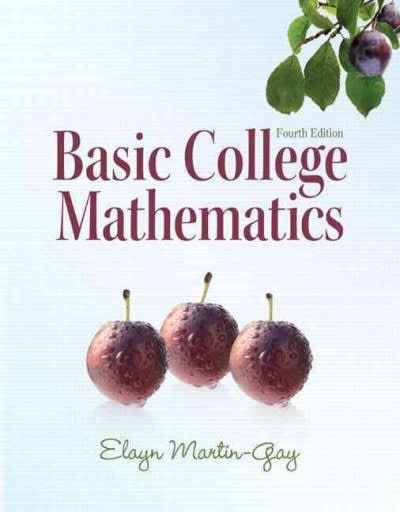Question
In this experiment, you will be using two different coins as a simulation for a real-world compound event. Suppose that a family has an equally
In this experiment, you will be using two different coins as a simulation for a real-world compound event.
Suppose that a family has an equally likely chance of having a cat or a dog. If they have two pets, they could have 1 dog and 1 cat, they could have 2 dogs, or they could have 2 cats.
What is the theoretical probability that the family has two dogs or two cats? 1 / 4 chance or 2 / 4 chance
Describe how to use two different coins to simulate which two pets the family has. Flip the two coins an equal amount of time if it lands on two head or two tails or heads and tails record it ant each one could be a different thing. 2 heads means 2 dogs, two tails means 2 cats, heads and tails means one dog one cat.
Flip both coins 50 times and record your data in a table like the one below.
| Result | Frequency |
| Heads, Heads | 15 |
| Heads, Tails | 7 |
| Tails, Heads | 13 |
| Tails, Tails | 15 |
| Total | 50 |
Based on your data, what is the experimental probability that the family has two dogs or two cats?
If the family has three pets, what is the theoretical probability that they have three dogs or three cats?
How could you change the simulation to generate data for three pets
Step by Step Solution
There are 3 Steps involved in it
Step: 1

Get Instant Access to Expert-Tailored Solutions
See step-by-step solutions with expert insights and AI powered tools for academic success
Step: 2

Step: 3

Ace Your Homework with AI
Get the answers you need in no time with our AI-driven, step-by-step assistance
Get Started


